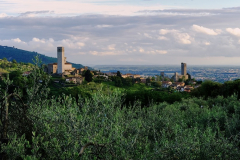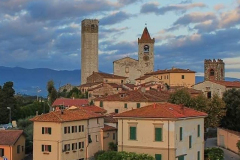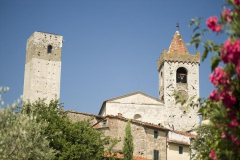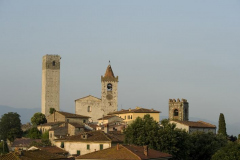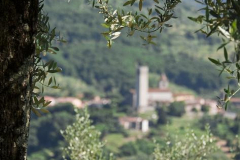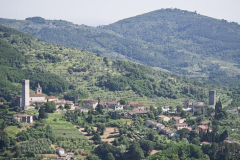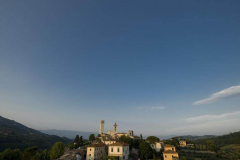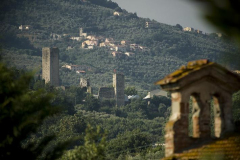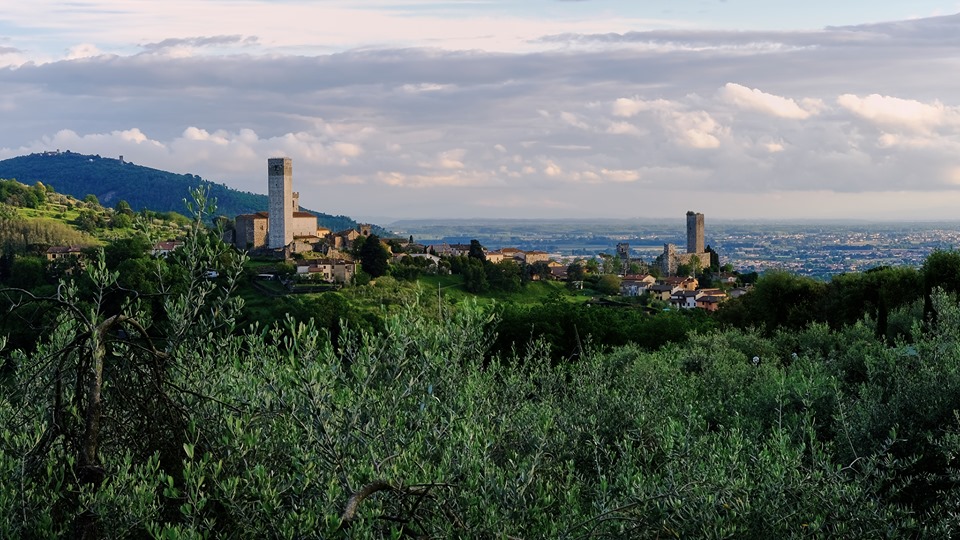
The medieval village is on the north-west side of Montalbano hills, between the Nievole and Ombrone valleys, areas of influence respectively of Lucca and Pistoia. The name of Serravalle recalls the closure between Pistoian valley and that one of the inhabitants of Lucca.
Two fundamental reasons determined the development of the castle: the control of the road system and the defense of the border. Its geographical position, fundamental for the control of the road between Lucca and Pistoia, was responsible for the realization of the Cassia consular road, which connected Florence, Pistoia, Lucca and Luni, already in Roman times (starting from the 2nd century BC). Probably some structure was already monitoring the route at the time. A fortified structure was probably already present when the Lombard advance (6th century) in Valdinievole found a barrier towards Pistoia in Montalbano. In fact, in the early Middle Ages the hill represented an important barrier to the Lombard advance into the northern area of Arno river. The first certain information dates back to the second half of the 12th century, when the Municipality of Pistoia fortified the Montalbano pass: between 1177 and 1179 the war against the nearby municipality of Montecatini was fought on this border.
At the beginning of the 14th century, Pistoia, part of the white Guelph faction, was against Florence and Lucca, part of the black Guelph faction. In June 1302 the Florentine and Lucca armies, commanded by the Marquis Moroello Malaspina, laid siege to the castle of Serravalle, the cornerstone of the Pistoian defense. Due to lack of supplies, it surrendered after a siege that lasted three months. On 6 September 1302, General Moroello Malaspina thus entered in Serravalle with his soldiers. It is said that the two armies wanted to make Serravalle pay for supporting the white part of Pistoia, but they were stopped by San Ludovico, patron saint of the village, who appeared on the battlements of the castle in a luminous cloud.
Starting from this period, for about thirty years, the castle became part of the defense system of Lucca. In 1314 Pistoia regained the control of the castle and it became an important military base during Castruccio Castracani’s campaign against Florence. Castruccio died in 1328, Serravalle and the castles of Montalbano were acquired by Florence in 1343 and became part of a system of fortified settlements that extended from Valdarno to Pescia.





